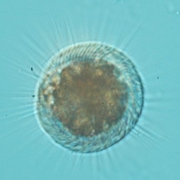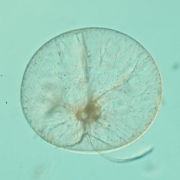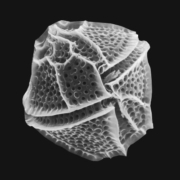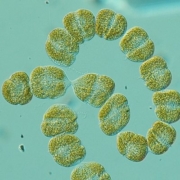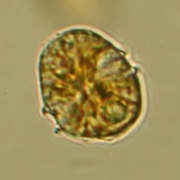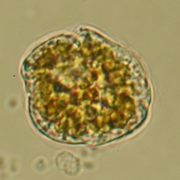The main organisms causing red tides (water coloration) in the Galician estuaries are:
Species: Mesodinium sp.
Color: Reddish
Non Toxic
Responsible for the most characteristic red tides in Galicia, the color of the water has a bloody appearance.
Species: Noctiluca scintillans
Color: Orange
Non Toxic (although it may accumulate toxins through its prey).
Often they are dragged towards the shore, where they form oily-looking spots in late summer. They are not toxic but can cause a certain burning sensation in the skin.
Species: Lingulodinium polyedrum
Color: Reddish
Slightly toxic (Yesotoxins).
Causing the first red tide described in the Galician Estuaries by Odón de Buen in 1916, although the naturalist Ramón Sobrino correctly identified the responsible organism in 1918.
Species: Gymnodinium catenatum
Color: Reddish brown
Highly toxic (PSP: paralyzing toxins).
It is responsible for the toxic proliferation of 1976 in the Rías Baixas that led to the implementation of a program to monitor toxic algae in Galicia.
Species: Alexandrium spp.
Color: Reddish brown
Toxic (PSP: paralyzing toxins).
Its proliferations are more abundant in the Rías Altas (eg Ares-Betanzos), where a case of coloration at sea was cited in 1984.
Species: Kryptoperidinium foliaceum
Color: Reddish brown
Non toxic
Frequent in estuarine areas. Red tides of this species have been observed in the inlet of Ramallosa (Baiona) and in the Ulla river.

